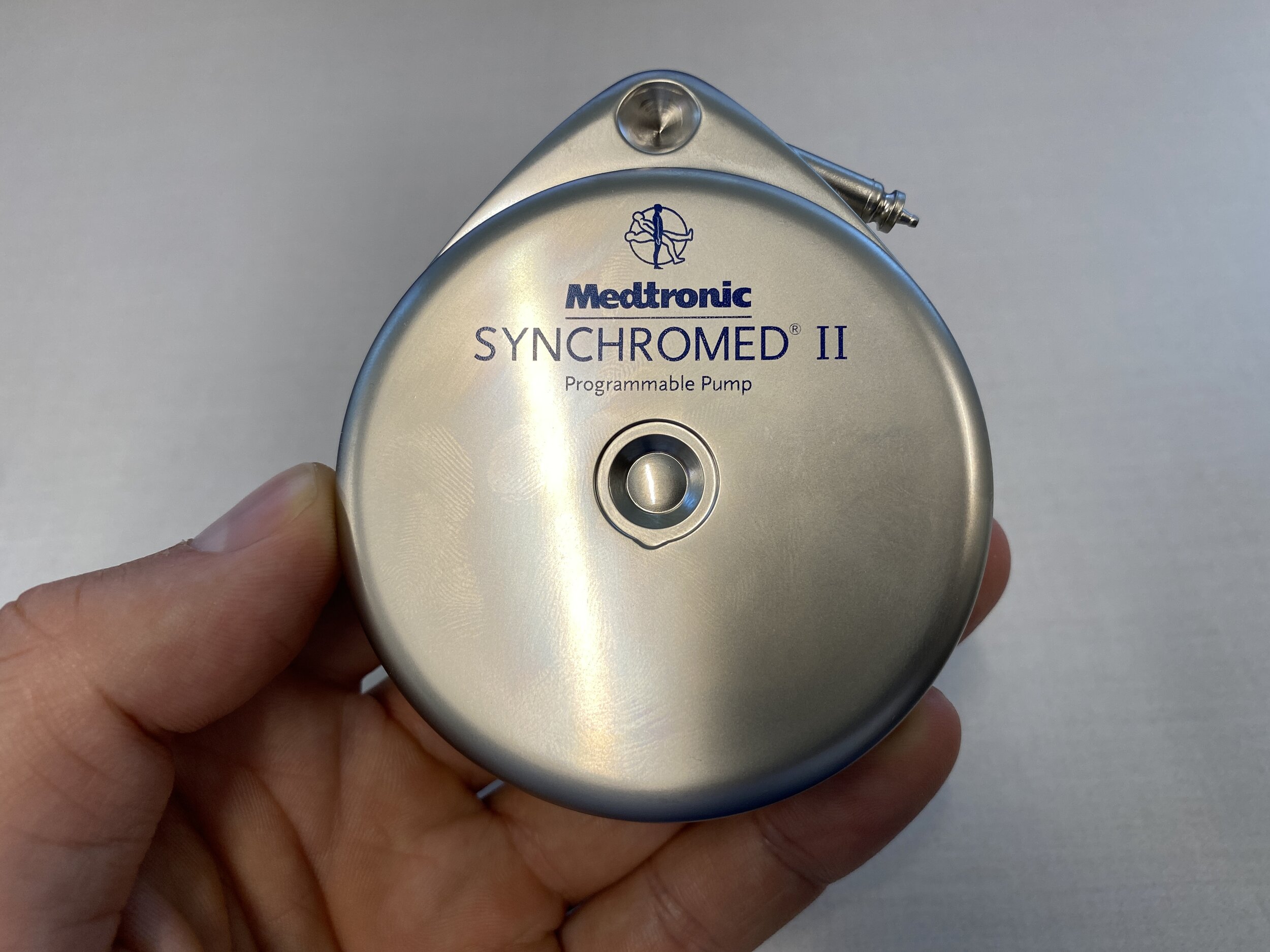Intrathecal Pump
An intrathecal pump is an implant used to deliver a continuous infusion of medication to the central nervous system. The most common reason for implanting a pump is spasticity, a neurologic condition in which there may be muscle stiffness, painful spasms, and trouble with coordination as a result of an injury to the nervous system. In the case of spasticity, baclofen is the typical medicine infused by the pump.
An intrathecal pump consists of two parts: (1) a thin catheter that enters the spinal canal in the low back (lumbar region), and (2) a reservoir chamber and pump, usually implanted beneath the skin of the lower abdomen (see photo below). The entire system sits underneath the skin, and it can be programmed wirelessly with an external device. The pump can be refilled as needed with a needle puncture.
Why implant a pump into the nervous system? Intrathecal pumps are useful for medications like baclofen, which target the central nervous system but may have undesirable side effects on other parts of the body if they are taken by mouth at high doses. And a pump can deliver medicine continuously, leading to steady and predictable medication effects, rather than fluctuations between peaks and valleys. In this way, intrathecal pumps can provide therapy that is both targeted and consistent.
An intrathecal pump is implanted under general anesthesia. A small incision is made in the low back. The catheter is inserted into the spinal canal with a needle under X-ray guidance, and it is then tunneled beneath the skin to the lower part of the abdomen on one side between the rib cage and the pelvic bone. A second incision is made off to the side of the navel, and the pump is implanted beneath the skin. Patients stay in the hospital after this operation, usually for one night. The pump is refilled periodically in the office as medication runs out, usually a few times per year.


